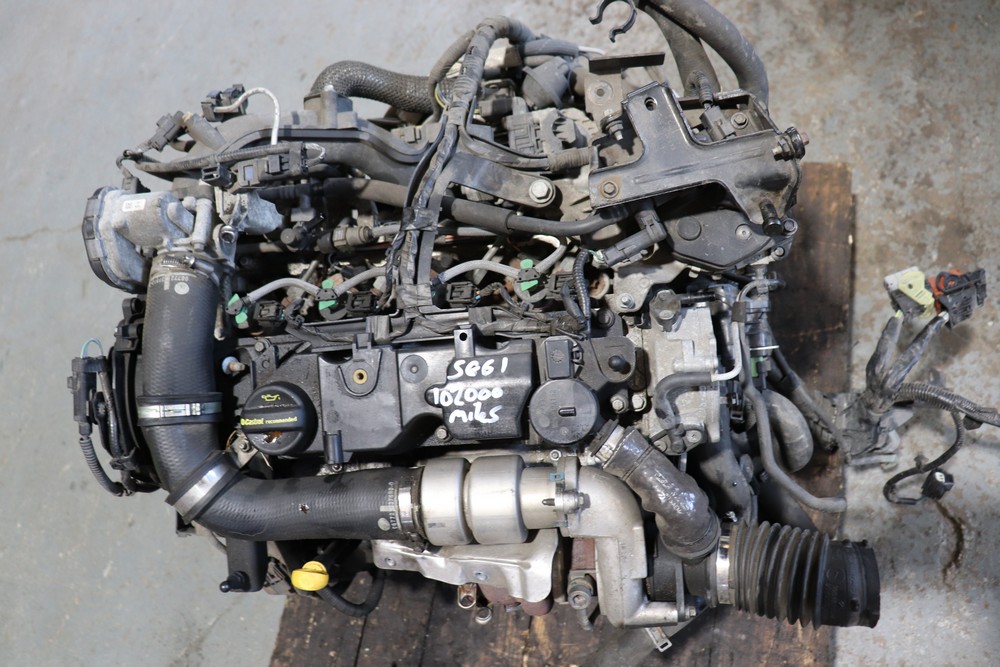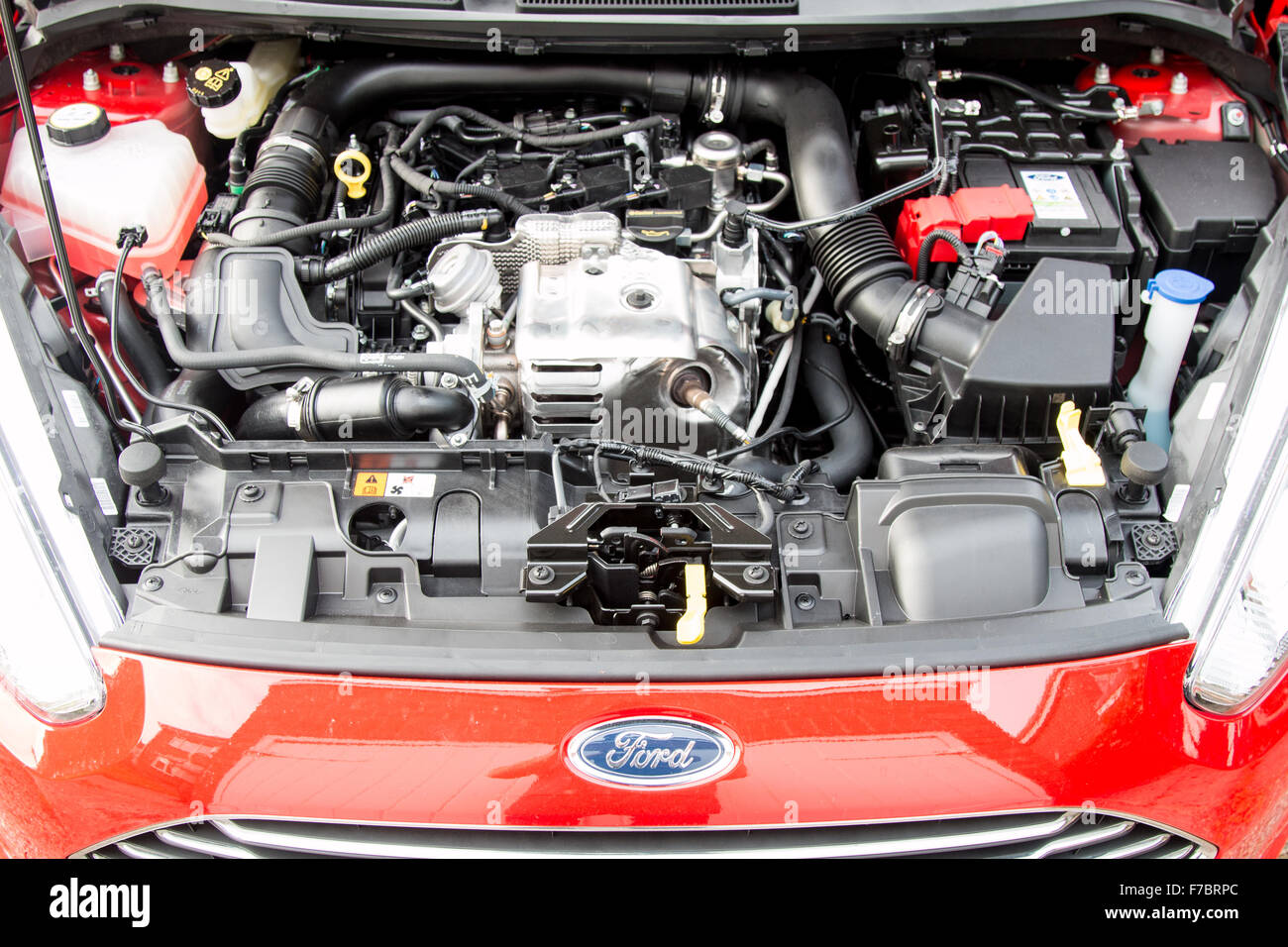Essential Services for Keeping Your Ford Fiesta Engine in Peak Condition
Wiki Article
Checking Out the Advancement of Engines: From Classic Designs to Modern Marvels
From the preliminary steam engines that powered the Industrial Transformation to the development of interior burning engines that transformed mobility, each phase has added to better performance and capacity. As we check out these landmarks, one have to take into consideration exactly how the future of engine layout might unfold, testing our assumptions of power and efficiency.The Birth of Engine Innovation
The advent of engine modern technology marked a critical minute in human development, transforming power conversion and transportation. The earliest engines arised from the demand to harness mechanical power for practical use, leading to the growth of gadgets that converted numerous energy kinds into movement (ford fiesta engine).The development of the interior burning engine and the creation of the heavy steam engine catalyzed an extensive shift in commercial capacities. These engines not just enhanced effectiveness yet likewise expanded the range of human mobility, allowing unmatched transport opportunities. The very early models prepared for the mechanical globe, helping with the rise of industries and improving societal frameworks.
As engine designs advanced, they integrated cutting-edge materials and advanced engineering concepts, leading the way for modern-day advancements - ford fiesta engine. The birth of engine innovation sparked a relentless quest of effectiveness and power, establishing the stage for the vibrant advancement of transportation and commercial equipment that would follow
Steam Engines and Their Influence

The heavy steam engine's influence was especially apparent in the transport industry (ford fiesta engine). Steam-powered locomotives promoted the rapid activity of products and people throughout vast ranges, properly shrinking the geographical barriers that had actually previously prevented trade and interaction. Steamships changed marine traveling, enabling for quicker and much more reliable crossings of oceans and rivers.
In sector, vapor engines powered factories, allowing automation and the surge of city facilities as hubs of financial task. This shift not just modified labor characteristics however also added to the development of a consumer-driven society. Heavy steam innovation promoted technologies in engineering and manufacturing procedures, laying the foundation for future improvements in engine layout. The legacy of heavy steam engines is extensive, reflecting a turning point in human resourcefulness and the unrelenting pursuit of progress.
The Surge of Internal Combustion
Frequently outweighing heavy steam power, the surge of internal burning engines noted a transformative shift in transport and sector during the late 19th and very early 20th centuries. The development of these engines, characterized by their ability to shed fuel within the engine itself, allowed greater efficiency and power contrasted to conventional steam engines. Pioneering developers such as Nikolaus Otto and Rudolf Diesel played vital functions in perfecting engine designs, leading to prevalent fostering in automobiles, boats, and commercial machinery.The internal burning engine's compact dimension and reasonably lightweight nature facilitated the appearance of individual cars, revolutionizing private movement and reshaping urban landscapes. By making it possible for faster travel and the effective transport of goods, these engines militarized financial growth and cultivated globalization. The versatility of fuel choices, including fuel and diesel, further boosted their charm, permitting diverse applications across numerous markets.
Despite the environmental issues that would later arise, the first appeal of inner combustion technology lay in its transformative possibility. As culture embraced this innovation, the structure was laid for modern-day transport systems, establishing interior combustion engines as a foundation of commercial advancement and life throughout the 20th century.
Advancements in Engine Efficiency
As inner combustion engines became integral to transport and sector, the emphasis shifted in the direction of boosting their effectiveness Learn More to meet expanding needs for performance and sustainability. Developments in engine layout, product science, and innovation have substantially contributed to this advancement.One significant improvement is the advancement of turbocharging, which enables enhanced air consumption, causing even more complete fuel burning and improved power outcome without increasing the size of engine size. Additionally, variable valve timing systems have actually been carried out to enhance engine efficiency throughout numerous RPM arrays, therefore boosting fuel effectiveness.
The use of advanced gas shot innovations, such as straight shot, has additionally played a crucial role. This approach permits more precise control over the fuel-air blend, advertising better combustion and decreasing emissions. Additionally, light-weight products, including aluminum and composite parts, have actually been taken on to decrease total engine weight, causing enhanced efficiency.
These developments mirror a more comprehensive trend within the automotive industry, where the harmony between engineering development and ecological factors to consider drives the continuous quest for greater effectiveness in interior burning engines. Because of this, contemporary engines are currently much more effective, cleaner, and effective than in the past, leading the way for a more lasting future in transportation.
The Shift to Electric Power
With expanding problems over ecological impact and nonrenewable fuel source dependence, the automobile industry is experiencing a substantial shift in the direction of electrical power. This shift is driven by a combination of technological innovations, governing pressures, and transforming consumer preferences. Electric lorries (EVs) offer an engaging choice to standard internal combustion engines, boasting decreased greenhouse gas discharges and lower operating costs.The surge of battery modern technology has been a game changer, with lithium-ion batteries becoming a lot more reliable and cost-effective. Enhanced power thickness and faster billing capacities have made EVs much more functional for daily usage. Furthermore, federal governments worldwide are implementing motivations and establishing ambitious targets for terminating fossil gas lorries, thus speeding up the fostering of electrical power.
As billing framework expands and battery technology continues to enhance, the change to electric power is poised to improve the automotive landscape, advertising sustainability and innovation in the years to come. The future of transportation is electrical, and the energy is undeniable.
Learn More
Verdict
The evolution have a peek at these guys of engine modern technology stands for a substantial trajectory of advancement that has actually profoundly affected transportation and market. From the foundational vapor engines to the transformative internal burning engines, each development has contributed to boosted mobility and financial growth. The present transition toward electrical power highlights a vital dedication to sustainability, driven by developments in battery innovation. This continuous development not just mirrors changing societal requirements however also highlights the possibility for a cleaner and much more reliable future in engine design.
Report this wiki page